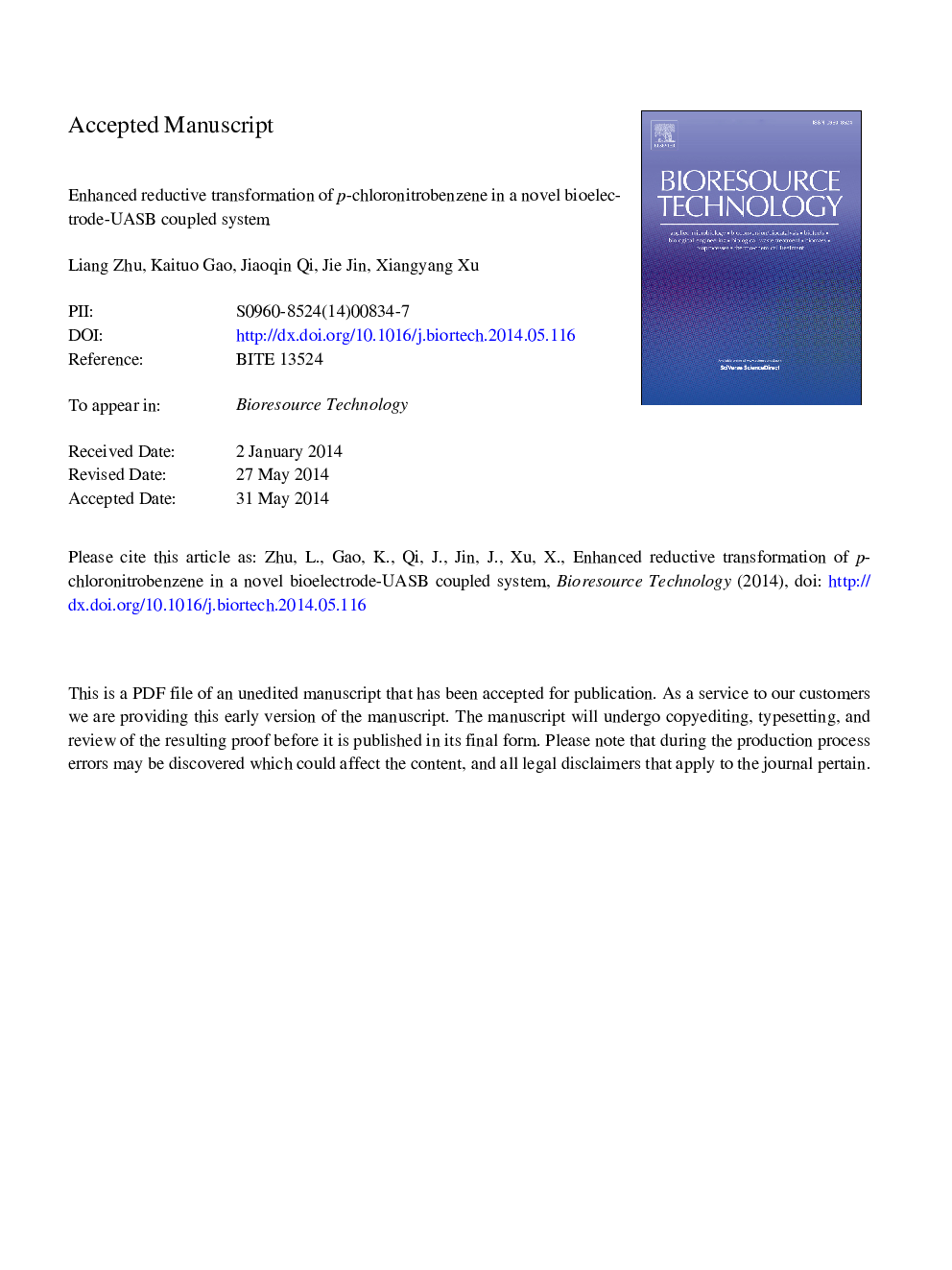| Article ID | Journal | Published Year | Pages | File Type |
|---|---|---|---|---|
| 7076553 | Bioresource Technology | 2014 | 27 Pages |
Abstract
The laboratory-scale upflow anaerobic sludge blanket (UASB) reactor equipped with a pair of bioelectrodes was established for the enhancement of p-chloronitrobenzene (p-ClNB) reductive transformation via the electrolysis. Results showed that a stable COD removal efficiency over 99% and high p-ClNB transformation rate of 0.328 hâ1 were achieved in the bioelectrode-UASB coupled system with influent COD and p-ClNB loading rates of 2.1-4.2 kgCOD mâ3 dâ1 and 60 g mâ3 dâ1, respectively. The bioelectrodes were supplied with a voltage of 2.5-5.0 V and the effective current was above 2 mA, which resulted in a continuous supply of H2. Compared with the traditional UASB reactor (R1), the production of H2 was promoted in the bioelectrode-UASB coupled system (R2), and was consumed as an internal electron donor for p-ClNB reductive transformation by anaerobic microbes simultaneously. Furthermore, the cyclic voltammetry curve (CV) analysis of biocathodes showed a positive shift in the reductive peak potential and a dramatic increase in the reductive peak current, which demonstrated the catalytic reduction of p-ClNB by biocathode in the combined system.
Related Topics
Physical Sciences and Engineering
Chemical Engineering
Process Chemistry and Technology
Authors
Liang Zhu, Kaituo Gao, Jiaoqin Qi, Jie Jin, Xiangyang Xu,
